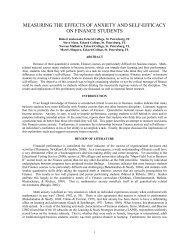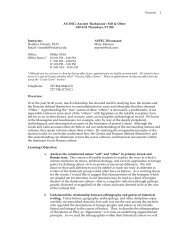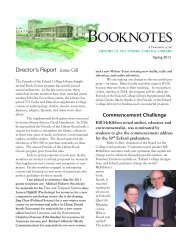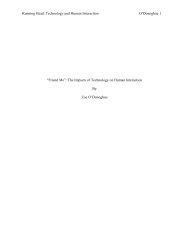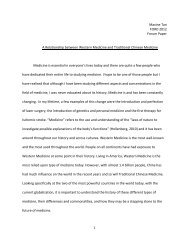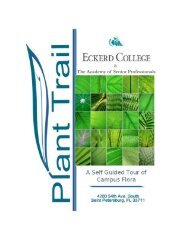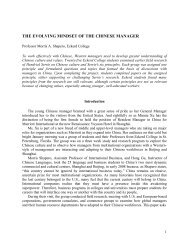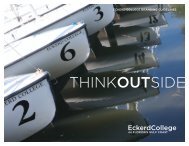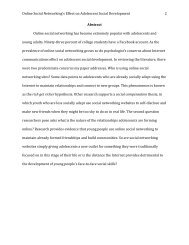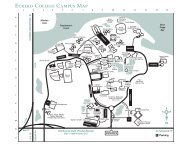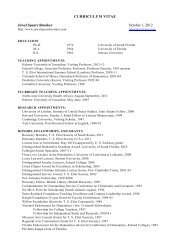Scientific and Lay Knowledge 1 Scientific and Lay Knowledge: The ...
Scientific and Lay Knowledge 1 Scientific and Lay Knowledge: The ...
Scientific and Lay Knowledge 1 Scientific and Lay Knowledge: The ...
You also want an ePaper? Increase the reach of your titles
YUMPU automatically turns print PDFs into web optimized ePapers that Google loves.
<strong>Scientific</strong> <strong>and</strong> <strong>Lay</strong> <strong>Knowledge</strong> 7<br />
interdisciplinary <strong>and</strong> open-ended approaches to problems. Science alone cannot offer open-ended<br />
answers because it focuses on such limited, specific topics, while everyday knowledge needs the<br />
methodology <strong>and</strong> precision of science. Benefits of the integration of scientific <strong>and</strong> local<br />
knowledge have already been observed in conservation efforts of reindeer in Sweden <strong>and</strong><br />
Bonefish in Kiribati, where traditional ecological knowledge (TEK) is incorporated into<br />
scientific studies (Ramstad et al., 2006). <strong>The</strong> public <strong>and</strong> indigenous peoples involved in the<br />
scientific process feel empowered through their inclusion, <strong>and</strong> the transparency in the science<br />
can allow scientists to gain back trust from the public. Science gains its true meaning for the<br />
majority of society when it is applicable to people <strong>and</strong> specific situations or contexts. In order to<br />
be applicable to people, scientific research must incorporate the knowledge local laypeople<br />
possess. This in turn contributes to the creation of a more universal, versatile knowledge.<br />
How to Integrate<br />
Communication, the realization of common goals, <strong>and</strong> collaborative research can help<br />
integrate scientific <strong>and</strong> everyday knowledge. Improved communication includes making<br />
scientific findings <strong>and</strong> processes available <strong>and</strong> underst<strong>and</strong>able to the public. This is done, in part,<br />
by promoting scientific literacy as well as presenting scientific findings to the public in clear <strong>and</strong><br />
timely manners. Scientists need to underst<strong>and</strong> the people for whom their research is relevant <strong>and</strong><br />
to recognize the importance of these people’s input in creating a comprehensive picture of the<br />
situation. Both scientists <strong>and</strong> members of the public must recognize the common goals that link<br />
them, including desires to better underst<strong>and</strong> the environment, life processes, threats to well-<br />
being, <strong>and</strong> conservation. Ramstad et al. found in their study of Maori traditional ecological<br />
knowledge (TEK) of the Tuatara (the only remaining members of an order of ancient reptiles)<br />
that scientists <strong>and</strong> practitioners of TEK share the common goal of the conservation of the



